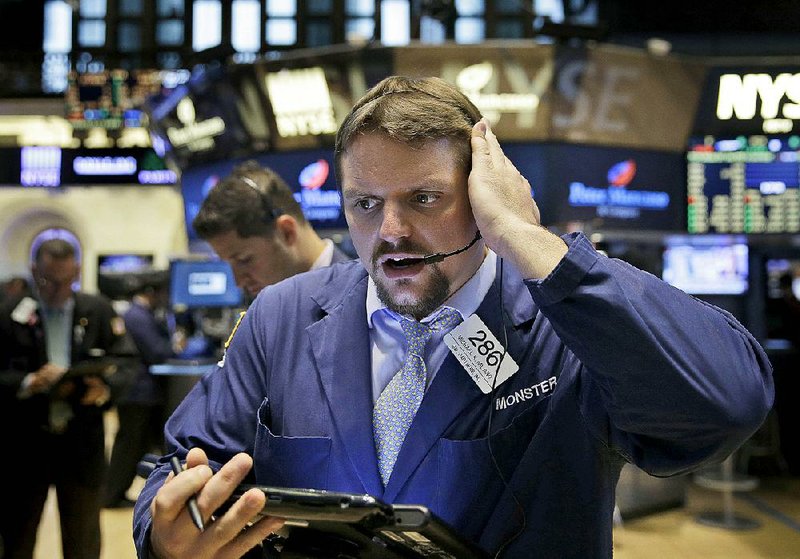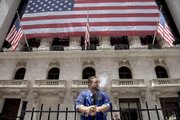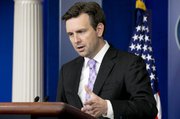NEW YORK — Trading on the New York Stock Exchange stopped for 3½ hours Wednesday because of a computer malfunction, forcing traders to route orders elsewhere.
The suspension, lasting from 10:32 a.m. to just after 2 p.m., dropped the largest U.S. share platform out of the network of trading systems that make up the American equity market.
The failure came as traders had plenty of other things to worry about. Concerns about China’s plunging stock market and a logjam in talks between Greece and its creditors weighed on the mood. Major indexes already were falling before the shutdown.
The Dow Jones industrial average dipped 261.49 points, or 1.5 percent, to 17,515.42, and the Nasdaq slid 87.70 points, or 1.8 percent, to 4,909.76. The Standard & Poor’s 500 index fell 34.66 points, or 1.7 percent, to close at 2,046.68.
The exchange didn’t say what caused the malfunction but described it as internal and not the result of hackers.
The broader stock market stayed open as orders to buy and sell kept flowing to the Nasdaq and other exchanges around the country.
Technical problems first appeared soon after the opening bell at 8:30 a.m., when orders for several smaller stocks failed to go through, trader Peter Costa and another trader on the floor said.
The initial glitches hit only a small number of stocks, and the exchange appeared to have dealt with the problem, but the problems reappeared, on a more widespread basis, later in the morning, the traders said.
Costa, president of Empire Executions, told The Wall Street Journal that NYSE officials told floor traders that the problem originated in a software update.
“They told us they did some software updates overnight and tested it without problems, but this morning something happened,” Costa said.
President Barack Obama was briefed on the market shutdown, according to Josh Earnest, the White House spokesman. Earnest said there was no evidence of “malicious activity” in the market problems.
Tom Caldwell, who runs an investment firm with stakes in several exchanges, said there are some 60 exchanges and trading venues that can take orders when one goes down, so investors shouldn’t get rattled.
“It’s disruptive, but not wildly disruptive,” said Caldwell, chairman of Caldwell Securities.
U.S. markets have been dogged by technical problems over recent years as more trading is handled by computers. In May 2010, the Dow plunged hundreds of points in minutes in an incident that later became known as the “flash crash.” In March 2012, BATS Global Markets, a Kansas company that offers stock trading services, canceled its own initial public offering after several glitches.
Two months later, the highly anticipated initial public offering of Facebook on the Nasdaq exchange was marred by technical problems that left investors unsure of whether their orders had gone through.
James Angel, an associate professor of finance at Georgetown University’s Mc-Donough School of Business, said NYSE’s shutdown highlighted both the fragility and the resilience of modern technology. Angel sat on the board of exchange company Direct Edge before it was acquired by a larger rival last year.
“From an investor’s perspective, if you hadn’t heard about the outage, you probably wouldn’t have noticed,” Angel said.
Portfolio manager Mark Spellman of Alpine Funds said a failure similar to Wednesday’s would have caused panic a few decades ago, when the NYSE dominated the market. But firms making trades were able to use a variety of other exchanges Wednesday while the NYSE was out of commission. He said the disruption didn’t cause any problems for the global markets.
“Only 15 [percent] to 20 percent of global stock exchange trading happens on the NYSE these days,” he said. “Things are so spread out.”
In a fragmented market where no venue controls more than 16 percent of volume, the halt was almost impossible to detect for anyone except professional traders and brokers, according to Yousef Abbasi of Jones Trading Institutional Services LLC.
“Today proves that we have a resilient infrastructure,” Abbasi said. “If something goes down, something else picks it up. Trading goes on.”
Still, others on Wall Street found the long wait nerve-racking.
Phil Orlando, chief equity strategist at Federated Investors, said it was unsettling that computer problems also forced United Airlines to temporarily ground flights across the country and caused the website of The Wall Street Journal to go down, all on the same day.
“These are visible icons of American industry,” he said. “It’s just unnerving.”
The Journal’s front page online was afflicted for almost an hour, during which it showed an error message saying “Oops, 504! Something did not respond fast enough, that’s all we know…” Individual articles were however still accessible by their direct links.
In China, the Shanghai Composite sank 6 percent Wednesday despite new attempts by China’s government to stop the selloff. Hong Kong’s Hang Seng, a victim of the turmoil in mainland Chinese markets, also lost 6 percent. The Chinese government ordered state-owned companies to buy shares and promised more credit to finance trading. The Shanghai index has lost almost a third of its value in the past month. It is still up 70 percent over the past year.
“All the attention is on China and Greece right now,” said Ninh Chung, who helps manage $20 billion for corporate accounts at Silicon Valley Bank in San Francisco. “The bigger focus will be China. As we see markets decline, I think there will potentially be spillover effects into other markets, just given how large the Chinese economy is.”
In Europe, Greece applied for a new three-year loan and said it would have a new proposal for creditors in coming days.
Europe’s major markets finished the day with gains. Germany’s DAX gained 0.7 percent and France’s CAC 40 rose 0.8 percent. Britain’s FTSE 100 added 0.9 percent.
U.S. government bond prices edged up, nudging the yield on the 10-year Treasury down to 2.20 percent from 2.26 late Tuesday. The euro rose to $1.1083, while the dollar fell to 120.78 yen.
The price of oil fell after the Energy Department reported a surprise increase in crude-oil supplies for the second-straight week. Benchmark U.S. crude fell 68 cents to close at $51.65 a barrel in New York. Brent crude, an international benchmark, rose 20 cents to close at $57.05 in London.
Information for this article was contributed by Matthew Craft, Steve Rothwell, Bernard Condon, Marley Jay, Marcy Gordon, Jim Kuhnhenn and Deb Riechmann of The Associated Press; and by Annelise Alexander, Joseph Ciolli and Callie Bost of Bloomberg News.


